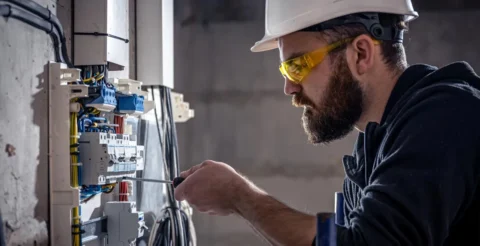Introduction to Walkways
Welcome to a world where every step you take leads you on a journey of beauty and design. Walkways may seem like paths from point A to point B, but in reality, they are so much more. They can be intricate works of art that enhance the aesthetic appeal of any outdoor space. Join us as we explore the enchanting realm of walkway styles and designs, from traditional cobblestone pathways to modern pavers that redefine elegance with every stride. Let’s embark on this guided tour through different styles and designs of walkways that will inspire your next outdoor project!
The Purpose of Walkways
Walkways serve as pathways that guide us through outdoor spaces, connecting different areas seamlessly. They are not just functional but also add aesthetic value to the surroundings.
The purpose of walkways goes beyond mere convenience; they enhance a landscape’s overall look and feel, creating a sense of cohesion and structure. By strategically placing walkways, you can direct foot traffic, define boundaries, and create focal points in your outdoor space.
These paths can lead visitors to specific destinations within a garden or yard while also providing an opportunity to showcase beautiful landscaping features along the way.
Well-designed walkways can elevate the curb appeal of your property and make it more inviting for guests.
Whether meandering through nature-inspired settings or leading straight to a welcoming entrance, walkways play a crucial role in shaping the flow and function of outdoor spaces.
Traditional Walkway Styles and Designs

Strolling down a cobblestone walkway can transport you back in time, evoking a sense of nostalgia and charm. The irregularly shaped stones fitted together create a timeless rustic and classic look.
Brick walkways offer a more structured and uniform appearance, perfect for adding a touch of elegance to your outdoor space. Brick’s versatility allows for various patterns and colors to be incorporated into the design.
Concrete walkways are durable, low-maintenance options that provide a clean and modern aesthetic. With endless possibilities for customization through stamping or staining, concrete can mimic the look of other materials while offering increased longevity.
Each traditional walkway style has its unique appeal, catering to different tastes and preferences in design aesthetics.
- Cobblestone
Imagine walking on a cobblestone walkway, the uneven stones creating a rustic charm under your feet. Cobblestone walkways have been around for centuries, adding character and history to any landscape they grace.
The timeless appeal of cobblestone lies in its durability and weather-resistant properties. Each stone is unique, creating an artistic pattern that enhances the aesthetic of any outdoor space. The natural texture of cobblestones provides traction, making them safe to walk on even during rainy days.
Cobblestones blend seamlessly with various architectural styles used in traditional or modern settings. From quaint European villages to contemporary urban spaces, cobblestone walkways exude elegance and sophistication.
Incorporating cobblestones into your landscaping design can add value to your property while offering a charming pathway for guests to traverse. So why not add a touch of old-world beauty with a classic cobblestone walkway?
- Brick
When it comes to walkway designs, brick is a timeless classic that adds charm and elegance to any outdoor space. The uniform shape and earthy tones of brick pavers create a visually appealing pathway that complements various architectural styles.
Brick walkways are not only aesthetically pleasing but also durable and low maintenance. They can withstand heavy foot traffic and harsh weather without losing beauty.
One of the advantages of using brick for walkways is its versatility in design options. From traditional herringbone patterns to more contemporary layouts, there are endless possibilities to customize your brick walkway to suit your style.
In addition to its aesthetic appeal, brick provides excellent traction, making it a safe choice for pathways around your home or garden. Whether you prefer a clean-cut look or a rustic feel, brick walkways offer versatility and durability that will enhance the overall appeal of your outdoor space.
- Concrete
Concrete walkways are popular for homeowners looking for durability and versatility in their outdoor spaces. Concrete can complement various architectural styles with its clean lines and modern aesthetic.
One key benefit of concrete walkways is their low maintenance requirements compared to other materials like brick or cobblestone. They are also resistant to cracking and shifting, making them ideal for high-traffic areas in your yard.
Concrete walkways offer endless design options. From stamped patterns that mimic the look of natural stone to stained finishes that add color and depth, there are plenty of ways to customize your concrete walkway to suit your style
.
Whether you prefer a sleek contemporary look or a more traditional feel, concrete walkways can be tailored to match your vision for your outdoor space. Plus, they can easily be integrated with other landscaping features like gardens or patios for a cohesive overall design scheme.
Modern Walkway Styles and Designs
Are you looking to add a touch of modern flair to your outdoor space? Modern walkway styles and designs offer a sleek and contemporary look that can elevate your property’s aesthetic appeal.
Pavers are popular for modern walkways, providing a clean and uniform appearance. Their versatility allows various patterns and color combinations to create a customized design that complements your landscaping.
Flagstone is another stylish option that adds texture and visual interest to your walkway. With its natural beauty and durability, flagstone creates an elegant pathway that blends seamlessly with the surrounding environment.
For those seeking a more casual yet chic vibe, gravel walkways offer a relaxed charm while exuding modern sophistication. The crunch underfoot provides a unique sensory experience as you stroll through your outdoor oasis.
Explore these modern walkway styles to transform your outdoor space into a contemporary haven that reflects your style and enhances the overall appeal of your home.
- Pavers
Regarding modern walkway designs, pavers are a popular choice that adds a touch of sophistication and elegance to any outdoor space. Pavers come in various shapes, sizes, colors, and textures, allowing endless design possibilities. Whether you prefer a sleek contemporary look or a more rustic feel, there is a paver style to suit your taste.
One of the benefits of using pavers for walkways is their durability and low maintenance requirements. They can withstand heavy foot traffic and harsh weather without losing appeal. Additionally, if one paver becomes damaged or stained, it can easily be replaced without redoing the entire walkway.
Another advantage of pavers is their versatility in design. You can create intricate patterns or keep it simple with straight lines – the choice is yours. Plus, with proper installation techniques, pavers provide a stable surface that reduces the risk of tripping hazards.
Choosing pavers for your walkway enhances the aesthetic appeal of your property and ensures longevity and ease of upkeep.
- Flagstone
Flagstone walkways offer a rustic and natural charm to outdoor spaces. The irregular shapes of flagstones create a unique and visually appealing pathway that blends seamlessly with the surrounding landscape. Each stone is distinct in size, shape, and color, adding character to the walkway.
One key advantage of using flagstone for walkways is its durability. These stones are naturally weather-resistant and withstand heavy foot traffic without losing beauty or functionality. Additionally, flagstone requires minimal maintenance compared to other materials, making it a practical choice for homeowners looking for a low-maintenance option.
The versatility of flagstone allows for endless design possibilities. Whether you prefer a formal layout with neatly placed stones or a more relaxed pattern with varying sizes and gaps filled with moss or gravel, flagstone can be customized to suit your style and preferences.
Choosing flagstone for your walkway adds an element of timeless elegance while enhancing the overall aesthetic appeal of your outdoor space.
- Gravel
Gravel walkways offer a rustic and natural aesthetic to any outdoor space. The crunching sound underfoot adds a unique charm as you stroll through the pathway. Gravel is versatile and easily shaped into various designs, making it suitable for different landscaping styles.
One advantage of gravel walkways is their low maintenance requirements. Regular raking helps keep the surface even and prevents weeds from taking root. Additionally, gravel allows for good drainage, reducing the risk of water pooling on your walkway during rainy seasons.
Depending on the size and color of the gravel used, you can achieve different looks – from a more traditional feel with neutral tones to a contemporary vibe with bold hues. Consider edging materials like stone or metal to define the boundaries and add structure to your gravel walkway design.
Gravel walkways are an excellent choice for those looking to add character and functionality to their outdoor spaces.
Factors to Consider in Choosing the Right Walkway Design
When choosing the right walkway design for your outdoor space, several factors must be considered. Think about the overall style and aesthetic of your home. A traditional cobblestone walkway may complement a classic colonial-style house, while a sleek concrete path could enhance a modern architectural design.
Consider the walkway’s practicality and functionality as well. Will it be a high-traffic area or mainly for aesthetics? The material you choose should be durable enough to withstand foot traffic and weather conditions in your region.
Another critical factor is maintenance. Some materials require more upkeep than others, so selecting a walkway design that aligns with your willingness to maintain it regularly is essential.
Remember budget constraints. Different materials have varying price points, so make sure to choose an option that fits within your financial limitations while still achieving the desired look for your walkway.
Maintenance and Upkeep of Walkways
Maintaining and upkeeping walkways is essential to ensure they remain safe, functional, and visually appealing for years to come. Regular cleaning by sweeping or power washing can help prevent dirt buildup and keep the surface looking fresh.
Weeding should be done regularly to prevent plants from growing between cracks or joints, causing damage over time. It is also essential to inspect for cracks or uneven surfaces that may pose tripping hazards and address them promptly.
Sealing the walkway every few years can help protect it from weathering and extend its lifespan. Additionally, monitoring drainage systems near the walkway can prevent water from pooling and causing erosion.
Investing time in maintenance will preserve the beauty of your walkway and contribute to a safer environment for those who use it regularly.
Conclusion: The Importance of Walkways in Enh
Integrating a well-designed walkway into your outdoor space can significantly enhance its appeal and functionality. Whether you opt for a classic cobblestone path, a sleek concrete walkway, or a trendy paver design, your chosen style can elevate your property’s aesthetic
.
The importance of walkways extends beyond mere aesthetics; they provide functional pathways that guide visitors through your landscape while protecting your lawn from unnecessary foot traffic. By selecting suitable materials and designs for your walkway, you can create an inviting atmosphere that complements the architecture of your home and showcases your style.
So, when planning your landscaping projects, remember to consider the design and layout of walkways on your property. With careful consideration and creativity, you can transform these simple paths into stunning features that connect different areas and add value to your outdoor space. Explore the diverse styles available and choose one that best suits your preferences – after all, every step along these beautiful walkways will lead to an enhanced outdoor experience.






